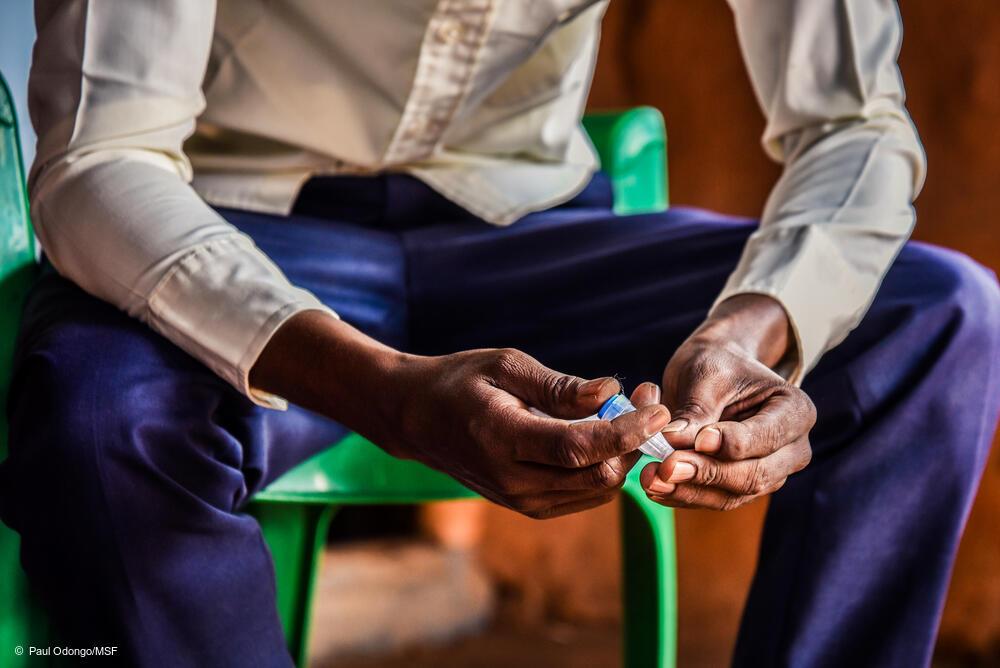Seeking to explore ways to improve diabetes care in resource poor settings a joint study by Médecins Sans Frontières /Doctors Without Borders (MSF) and University of Geneva published this week in PLOS ONE , has demonstrated that a range of insulins can be stored at temperatures ranging between 25-37 degrees for a four–week period of use. This study confirms the possibility for people living with diabetes in similar temperature conditions to be able to use insulin, for a period of up to four weeks, even in the absence of access to refrigeration.
Diabetes is a chronic, progressive disease that can be controlled with effective treatment. However, in many countries, people living with diabetes are not getting the treatment they need to stay healthy and alive. It is a shameful fact that only about half of people requiring insulin have access to it. Access to insulin has been largely prevented due to high prices, challenging storage requirements and complex treatment protocols.
Strict storage recommendations for insulin are difficult to follow in tropical regions and even more challenging in conflict and humanitarian emergency settings, adding an extra burden for people managing their diabetes. Storage recommendations for insulin require refrigeration until its expiry date, or until it is opened for use. Once in use, the storage recommendations on the label of most human insulins are below 25°C for 42 days. In many settings, this results in people being asked to travel to the health clinic for injections and monitoring, at least twice a day, for life.
Real-life conditions
The MSF team in the Dagahaley refugee camp in northern Kenya found that the temperature in a home fluctuates between 25°C at night and 37°C during the day. The researchers then meticulously reproduced these conditions in laboratory setting, where they tested insulin storage. “As you can use insulin vials for four weeks after opening, we carried out our measurements over the same time -frame, first with vials kept at the temperatures found in Dagahaley, and then with ‘control’ vials that were refrigerated,” explains Leonardo Scapozza, a professor of the School of Pharmaceutical Sciences in UNIGE’s Faculty of Sciences. The UNIGE team used high-performance liquid chromatography to analyse the insulin. “The risk is that insulin, a protein, precipitates under the influence of heat.In other words, it would begin to form ‘flakes’. Since the insulin is no longer in solution, it can’t be injected.”
Results that may change the daily lives of thousands of people
This scientific study has shown for the first time that insulin vials can be used for four weeks even in hot weather without being refrigerated. “These results can serve as a basis for changing diabetes management practices in low-resource settings, since patients won’t have to go to hospital every day for their insulin injections,” states Dr Boulle. In addition, people with diabetes would no longer be discriminated against and could lead normal lives and work. “Of course, this will have to go hand-in-hand with educating patients, as well as providing support and follow-ups,” says Dr Boulle, “so that people with diabetes can measure their blood sugar levels and inject the right amount of insulin. This will allow people to manage their illness correctly, and more independently. In support of this goal, we hope that a consensus statement will be drawn up, focusing on the at-home use of insulin in high temperature settings when there is no refrigeration available, and that it will be endorsed by the WHO.”
